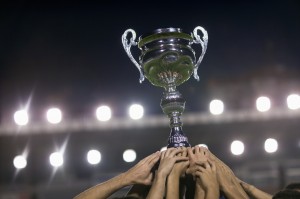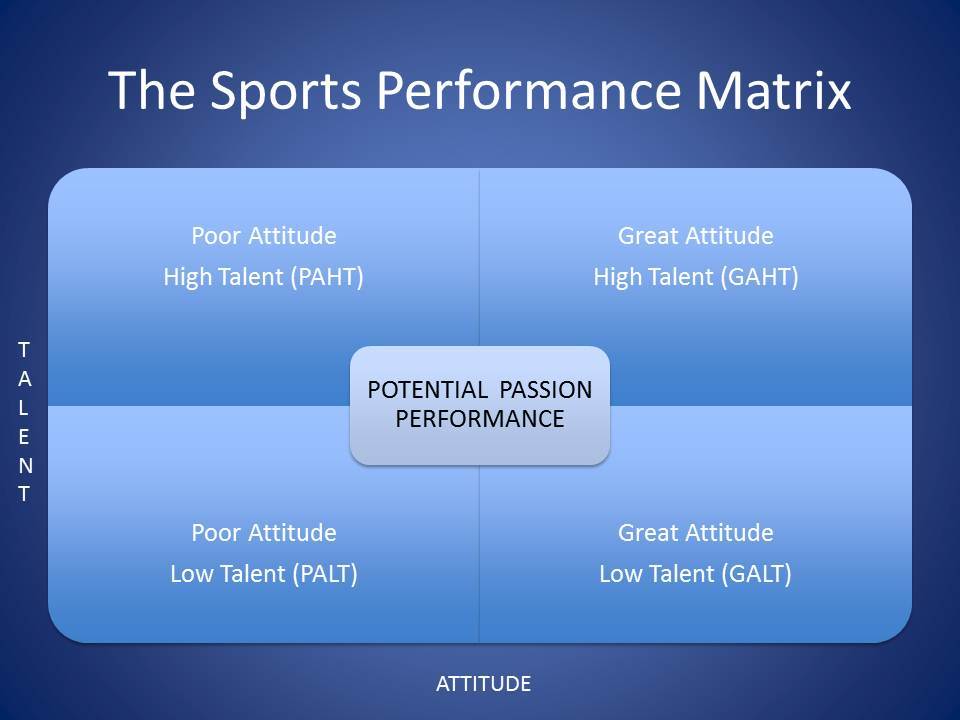High Performance Sports Leadership

High Performance Sports Leadership.
In High Performance Sport, experience is important.
Knowledge of the sports industry is critical.
An understanding of the culture of high performance is vital.
But ultimately, success is high performance sport comes down to possessing exceptional talent and ability in five core areas:
- Problem solving;
- Crisis management;
- Creating and sustaining a high performance environment, i.e. change management and continuous improvement;
- Finding, training and retaining the right people;
- Quality, consistent leadership.
And of these five skills, problem solving is perhaps the least understood – primarily because it hard to measure, hard to define and next to impossible to teach.
Here is Problem Solving in High Performance Sport 101.
High Performance Sports Leadership 101 Lesson 1: A fish rots from the head.
The majority of problems experienced in high performance sports programs, professional teams and sporting clubs are as a result of poor leadership. The sport (the fish) will succeed or fail (rot) based on the consistent quality of the leadership (the head).
Whilst problems can be created and solved by players, coaches, management and staff, Clubs with a long term history of failure, public embarrassment, off field discipline issues and scandal invariably get that way due to poor leadership at Board and Executive level.
It is common that a sporting organisation when faced with failure will sack the coach, hire new support staff and recruit new players to try and solve their performance problems.
Effective high performance sports leadership is so much more than just hiring and firing: so much more than trying to purchase performance through investment in new facilities and infrastructure.
In sporting organisations where failure is experienced over and over and over again, replacing coaches, staff and players rarely fixes the real problems or if it does fix them, it does not fix them for very long.
It is however, to use our “fish” analogy again, much easier to remove a few scales or cut off a fin than it is to slice off the head altogether, so in many sporting organisations the real problems (i.e. the leadership) survive while the more “expendable” parts get removed and turned into “sporting soup”!
High Performance Sports Leadership 101 Lesson 2: He (or she) who is responsible for the problem must solve the problem.
In all sporting organisations, problems are created, managed and solved every day. The key to effective problem solving in high performance sport is understanding what the problem really is and most importantly, who should take responsibility for solving it.
There are three classes of problems in high performance sporting organisations:
Short term Problems: Players / athletes to solve – i.e. immediate problems impacting on the current season which involve matters such as attitude, attendance, time management, self management, dress standards, personal leadership, on and off field training standards, playing standards, alcohol management, personal values and discipline. Problems involving these issues should be solved by the athletes themselves as these problems are those owned by and within the control of the athletes themselves.
Medium term Problems: Coaches to solve – i.e. those problems which impact across this season and the next including such areas as tactics, techniques, strategies, playing style, player recruitment, program planning, player development, skills and preparation. Problems in these technical, tactical and strategic areas of the organisation are the coaches domain and need to be solved by the coaching group.
Long term Problems: Board and Executive to solve – i.e. those problems which continue year after year regardless of changes in the playing and coaching areas: those broader, strategic and sustainable type (cultural) issues which the Board and Senior Management are responsible for solving.
Many of the biggest disputes in high performance sporting organisations, professional teams and Clubs are experienced when people try to solve problems which do not concern them.
For example, matters of attitude and commitment in the playing group are not for the Board to try and solve, in the same way that players should not be trying to solve economic sustainability or long term strategic planning issues for the Board.
Clarity in responsibility and accountability for decision making, behaviour and standards are the foundations of all great commercial organisations – and sporting organisations are no different.
High Performance Sports Leadership 101 Lesson 3: All problems in high performance sport are inter-disciplinary in nature: there is no “one size fits all” solution to all performance problems.
Most people will try to solve problems in high performance sport using one word, one phrase or one sentence, for example:
- Problem: The team is not winning.
- Solution: The players need to get stronger.
or
- Problem: The team’s attitude is poor.
- Solution: The players need to try harder.
High performance sport is a complex environment where nothing exists in isolation and everything is dependent on something and someone else to be effective.
Problems in high performance are never simple and can not be solved from a single perspective – they are all interdisciplinary in nature and require an interdisciplinary, selfless, ego-less, creative, team focused, “we not me” approach to solve them.
Into this environment comes the “sales-reps” – the people representing sporting equipment manufacturers, nutrition supplement companies, gym equipment suppliers etc etc promising to enhance the performance of the team with a new machine, a few pills, some new equipment or some revolutionary new clothing technology.
There are no instant solutions, quick fixes or miracles cures in high performance sport. It takes real effort, real discipline and real commitment to make effective, meaningful and measurable change in the organisation’s culture and environment and people offering one size fits all solutions to every performance problem should not be believed or taken seriously.
In high performance sport where success is measured in fractions of seconds and millimetres of error, anyone promising solutions of 5-10% improvement in performance (as is routinely promised by sales staff representing various manufacturers) is either:
- A. Lying;
- B. Delusional;
- C. Compromised due to their salary being based on sales commissions;
- D. All of the above.
High performance sport is a tough environment and real improvement demands an uncompromising commitment to solving performance problems with honesty, integrity, responsibility, creativity, accountability and sincerity: and there are no pills or machines on earth that can deliver any of those.
High performance sports leadership by definition means that leaders need to adopt the same commitment excellence as they expect from their coaches and athletes.
Performance comes from passionate people consistently preparing and performing to their peak potential.
Summary:
- Problem solving is a critically important skill to develop and enhance if you are to succeed in high performance sport;
- Short term problems in high performance sport can be solved by players and people involved in the current competitive cycle / season but longer term problems require solutions which are created and driven by the Board and Executive;
- A Fish Rots from the Head – sporting organisations who experience failure over multiple seasons and over many years are suffering from the effects of poor leadership at Board and Executive level and changes in coaching, playing and support staff will make only minimal, temporary and unsustainable impact;
- Be aware of people promising quick fix solutions to performance problems: it is sounds too good to be true….it is.
Moregold works with Sporting Organisations to create and sustain world class high performance sporting environments.
Wayne Goldsmith



0 Comments